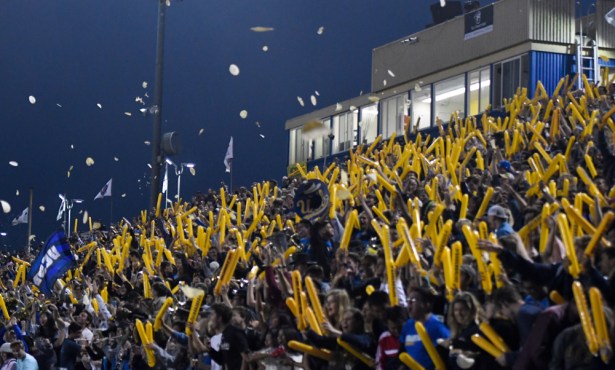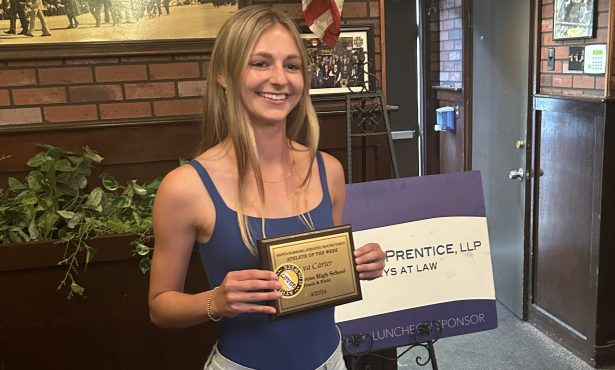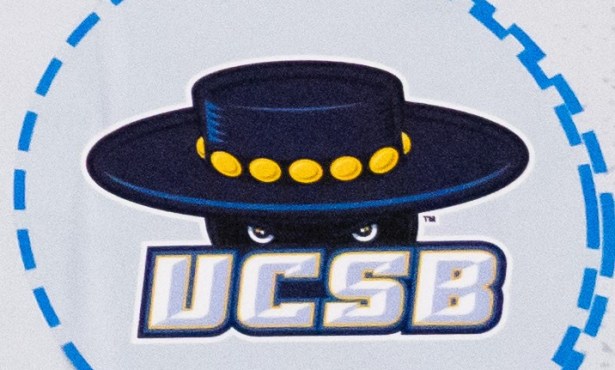Race Across America
Santa Barbarans Cycle Coast to Coast to Raise Funds for CALM
Few people have ever accomplished a feat as daring or dangerous as, say, climbing Mount Everest or swimming across the English Channel. However, a group of eight Santa Barbarans have contributed to the list of incredible physical accomplishments that mankind has undertaken-a 3,000-mile bike race across 14 states in less than seven days. Why would someone brave long hours and extreme terrain? Perhaps the same reason George Mallory climbed Mount Everest in 1924-because it’s there.
Santa Barbara Green Power is the team made up of a group of Santa Barbarans: team captain Dr. Don Flanigan and stepson Shaw Talley, Dr. George Bifano, Ed Allbritton, Brian Knowles and son Steve Knowles, Paolo Gianni, and Mark Luke. Each rider pushed himself to the limit, and sped across the country at a team average of 18.71 mph, ending in Annapolis in six days, 17 hours, and seven minutes. Known as Race Across America (RAAM), the event was conceived in 1982, and inspired by George Nellis, who in 1887 rode a 45-pound, single-geared bike across the country in just 80 days.
RAAM is 50 percent longer than the Tour de France, with no rest days. Beginning in Oceanside California, the race takes riders through the vast variations of North American terrain to the finish line in Annapolis, Maryland. Racers will climb an accumulate 100,000 feet above sea level, which equals nearly two vertical miles. The highest ascent racers face is 10,300 feet. Riders are racing against other teams and a continuously running clock. Teams consist of one to eight riders, and single-man teams are given one day’s head start and 12 days to finish, while team riders are allotted seven days to finish. Competition is broken down further by age groups since the range varies from 20- to 70-year-olds. In order to finish the race within the allotted time, they are limited to at least four hours of sleep a day.
The team was organized into two separate squads, each equipped with good climbers and flat ground riders as part of their tactic to place as well as they could. The riders returning from last year’s event beat last year’s time of seven days, seven hours, and 40 minutes. Ed Allbritton attributes this year’s team record-breaker to knowing what to expect. This year’s crew brought along a bus for sleeping and holding equipment, as well as two vans to follow each squad as a safety measure. Allbritton said, “We knew better how to prepare, having the bus instead of using hotels helped quite a bit.”
The real slowing factor in the race was the rain and wind, Allbritton explained. Going through the Appalachian Mountains on the last leg of the race really killed the team’s average speed, which until that point was 19.71 miles per hour, but finished at 18.71. Rigorous is an understatement when considering the bike ride these men pushed themselves to accomplish, most whom are about the same age as my grandfather.
Crossing the Midwest through torrential weather seemed to be about the worst of the team’s problems. George Bifano told of a near encounter with tornado winds that forced two riders into a ditch for cover near the side of the road, and made hearing through his helmet nearly impossible while also being attacked by quarter-sized particles of hail. While riding through the torrential rain and clocking the distance of lightning strikes, Mark Luke experienced lightning striking very close to his position. Aside from the gnarly weather they encountered, they didn’t get the brunt of it as some teams couldn’t cross the same highway because of rising Midwest floods.
Don Flanigan said that aside from the intense weather in the Midwest, cruising down the Glass Staircase, a group of massive descents through Mount Palomar into the desert that brought the riders’ speed near 45mph, was just as exhilarating. As the team entered Annapolis, nearing the finish line, Allbritton’s tire went flat while exiting the freeway during rush hour traffic. Scrambling through the van trying to find a spare tire that wasn’t already flat, and fearing they would need another rider from the other squad to finish for him, they finally found a tire atop the bus and Allbritton was able to make it across the finish line unassisted. “When I got that flat, I felt so close, yet so far away,” Allbritton said. Although the winning eight-man team was a younger Norwegian team, Santa Barbara Green Power, the oldest of the eight-man teams, placed eighth out 10 eight-man teams. Aside from a little cramping and exhaustion, Santa Barbara Green Power made it back in one piece without any injuries.
A race of this magnitude definitely gave these incredible men a great philanthropic opportunity. Their team name was derived from a serious need to rethink our ecological footprint in Santa Barbara and find alternative modes of transportation. Barry Berkus, from Berkus Design Studio, a local architect firm, held a reception with many prominent figures to explain the team’s goal in promoting green energy, as well as help garner funds for CALM (Child Abuse Listening and Meditation). The team promoted both charities through friends, emails, phone calls, and flyers in each rider’s work place, culminating in more than $13,000 raised for CALM. Don Flanigan said, “We’ve made money for CALM for the past two years our riders and crew have been affiliated with CALM.” Last year they raised $17,000. Along with a sizeable donation for an extremely good cause, these men proved that a bicycle can take you farther than the corner grocery store.
Although most of these riders are returnees to RAAM, when asked if S.B. Green Power would race next year, Allbritton responded, “It’s a little early to know what might happen,” which is appropriate considering he just rode 3,000 miles on a bicycle.



